Every MLB Team's Best Hitter of the 1990s
Joel ReuterFebruary 3, 2024Every MLB Team's Best Hitter of the 1990s

Who's up for some fun 1990s nostalgia while we continue to wait on the final few dominos to fall on the free-agent market and the fast-approaching start of spring training?
Ahead we've taken a walk down memory lane to name the best hitter for each team during that magical decade that was the '90s.
Only stats compiled with a team were up for consideration, so someone like Fred McGriff who suited up for the Toronto Blue Jays, San Diego Padres, Atlanta Braves and Tampa Bay Devil Rays had a tougher road to earning a spot on this list despite a terrific overall decade.
Included along with the choice for each team is a list of honorable mentions, just to add a few more "I remember that guy!" opportunities to the mix.
Now sit back and let the nostalgia wash over you.
Arizona Diamondbacks: 2B Jay Bell

Jay Bell officially became the first player in Diamondbacks history when he signed a five-year, $34 million deal in free agency one day before the 1997 Expansion Draft was held, and he delivered two of the best seasons of his career for the fledgling franchise.
After posting a 109 OPS+ with 20 home runs and 69 RBI in 1998, he exploded for a 131 OPS+ in 1999 while setting career-high marks in home runs (32) and RBI (112) while earning a starting nod in the All-Star Game.
For the record, Luis Gonzalez didn't join the D-backs until 1999, and his best seasons came in the early 2000s.
Honorable Mentions: OF Steve Finley, OF Luis Gonzalez, 3B Matt Williams
Atlanta Braves: 3B Chipper Jones

Despite not becoming a full-time MLB player until the 1995 season, Chipper Jones still ranked among the top 50 players for the entire decade with 28.4 oWAR, and that was tops among all Atlanta Braves players for the decade.
The No. 1 overall pick in the 1990 draft helped the Braves win a World Series title as a rookie in 1995, and by the end of the decade he was the NL MVP, hitting .319/.441/.633 for a 169 OPS+ with 41 doubles, 45 home runs and 110 RBI to take home the hardware in 1999.
David Justice and Fred McGriff both spent significant time playing for other teams during the 1990s, which gave Jones a clear path to top honors.
Honorable Mentions: SS Jeff Blauser, OF Ron Gant, OF David Justice, OF Ryan Klesko, C Javy Lopez, 1B Fred McGriff, 3B Terry Pendleton
Baltimore Orioles: OF Brady Anderson
- Anderson: 118 OPS+, 177 HR, 624 RBI, 844 R, 35.7 oWAR, 4.3 oWAR per 162 games
- Ripken: 107 OPS+, 198 HR, 827 RBI, 768 R, 34.7 oWAR, 3.8 oWAR per 162 games

Hall of Famer Cal Ripken Jr. was the face of the Baltimore Orioles throughout his career, but he was at his best during the 1980s, and a side-by-side stat comparison shows Brady Anderson has a slight edge for best hitters of the '90s.
Anderson is best remembered for his out-of-nowhere power surge during a 50-homer season in 1996, but he was far from a one-hit wonder, posting solid power-speed numbers as a three-time All-Star in Baltimore.
Honorable Mentions: 2B Roberto Alomar, C Chris Hoiles, 1B Rafael Palmeiro, SS/3B Cal Ripken Jr.
Boston Red Sox: 1B Mo Vaughn

Wade Boggs left for the New York Yankees after the 1992 season, while Nomar Garciaparra didn't arrive in the big leagues as a full-time player until 1997, leaving first baseman Mo Vaughn as an easy pick for the Boston Red Sox.
The burly slugger ranked among the '90s leaders in home runs (263, 15th) and RBI (860, 17th), and he did it while hitting .301/.390/.538 for a 138 OPS+ across 5,044 plate appearances.
He spent the 1999 season with the Anaheim Angels, so not all of that production came in Boston, but the bulk of it did, including his 1995 AL MVP win.
Honorable Mentions: 3B Wade Boggs, SS Nomar Garciaparra, SS John Valentin
Chicago Cubs: OF Sammy Sosa

Sammy Sosa came to the Chicago Cubs prior to the 1992 season in a trade with the crosstown Chicago White Sox that sent All-Star outfielder George Bell the other way, and he would go on to develop into one of the most prolific home run hitters in MLB history.
He broke out in 1993 with a 33-homer, 36-steal season and had another 30/30 campaign in 1995 before closing out the decade with two of the most memorable power-hitting performances of all time.
He won NL MVP in 1998 when he slugged 66 home runs while battling head-to-head with Mark McGwire for the single-season record and then followed that up with a 63-homer campaign in 1999. His 332 home runs during the '90s ranked sixth in baseball.
Honorable Mentions: 1B Mark Grace, 2B Ryne Sandberg
Chicago White Sox: 1B Frank Thomas

Some decisions in this exercise were easier than others, and this one was among the easiest as Frank Thomas was one of the faces of baseball during the 1990s, hitting .320/.440/.573 with 301 home runs and 1,040 RBI while spending the entire decade with the Chicago White Sox.
He won AL MVP in 1993 and 1994, and he took home the AL batting title in 1997. He tallied far more walks (1,076) than strikeouts (741) during the decade, and he was not only a prolific power hitter but also one of the game's best contact hitters.
Fun fact: Robin Ventura led all third basemen with 46.1 WAR during the '90s, but much of his value came from his glove.
Honorable Mentions: 2B Ray Durham, 3B Robin Ventura
Cincinnati Reds: SS Barry Larkin

Barry Larkin was an eight-time All-Star during the '90s, hitting .303/.388/.466 for a 126 OPS+ with 1,447 hits, 137 home runs, 639 RBI, 834 runs scored and 266 stolen bases.
Before a wave of young shortstops led by Derek Jeter and Alex Rodriguez exploded onto the scene midway through the decade, Larkin and Cal Ripken Jr. were in a class of their own at the position.
Tip of the cap to Reggie Sanders, who had 125 home runs and 158 steals in his eight seasons with the Reds while hitting .271/.353/.476 for a 118 OPS+. He was one of the most underrated players of the '90s.
Honorable Mentions: 1B Hal Morris, OF Reggie Sanders
Cleveland Guardians: OF Albert Belle

The Cleveland offenses of the 1990s were among the most dangerous in MLB history, from speedy Kenny Lofton setting the table to sluggers Carlos Baerga, Albert Belle, Jim Thome and a young Manny Ramirez sending balls flying out of Jacobs Field.
Belle had a relatively short career, playing just 10 full seasons in the majors, but he was the most feared hitter in those lineups at his peak. That included a 1995 season in which he hit .317/.401/.690 with 52 doubles, 50 home runs and 126 RBI and was robbed of AL MVP honors.
He continued to rake for the Chicago White Sox in 1997 and 1998, and the Baltimore Orioles in 1999, but his production in Cleveland prior to those final three years of the decade was enough for him to claim top honors.
Honorable Mentions: 2B Carlos Baerga, OF Kenny Lofton, OF Manny Ramirez, 1B/3B Jim Thome
Colorado Rockies: OF Larry Walker

Larry Walker was already an All-Star and two-time Gold Glove winner when he signed a four-year, $22 million deal with the Colorado Rockies prior to the 1995 season.
He went on to win NL MVP in 1997 when he hit .366/.452/.720 with 46 doubles, 49 home runs, 130 RBI and 33 steals, and he followed that up by taking home the NL batting title in 1998 (.363) and 1999 (.379).
For all the stigma attached to Rockies hitters padding their stats at Coors Field, he actually had better numbers on the road (1.176 OPS, 29 HR) than he did at home (1.169 OPS, 20 HR) during his MVP season.
Honorable Mentions: OF Dante Bichette, OF Ellis Burks, 3B Vinny Castilla, 1B Andres Galarraga
Detroit Tigers: 1B Cecil Fielder

After a forgettable four-year stint with the Toronto Blue Jays, Cecil Fielder spent the 1989 season playing in the Japanese League where he posted a 1.031 OPS with 38 home runs in 106 games for the Hanshin Tigers.
He returned stateside for the 1990 season on a one-year deal with the Detroit Tigers and promptly became the first player since George Foster in 1977 with a 50-homer season, batting .277/.377/.592 with 51 home runs and 132 RBI.
He led the AL in home runs (44) and RBI (133) again the following year, and he tallied 245 home runs and 758 RBI in seven seasons in Detroit.
Honorable Mentions: 1B Tony Clark, SS/3B Travis Fryman, UT Tony Phillips, C Mickey Tettleton
Houston Astros: 1B Jeff Bagwell

Jeff Bagwell won 1991 NL Rookie of the Year honors and never looked back from there, spending more than a decade as the face of the franchise for the Houston Astros alongside fellow Hall of Famer Craig Biggio.
Bagwell won 1994 NL MVP while finishing in the top five in voting two other times, and he is the only first baseman in MLB history with multiple 30/30 seasons, reaching those marks in 1997 (43 HR, 31 SB) and 1999 (42 HR, 30 SB).
During the '90s, he finished with a .304/.416/.545 line while racking up 263 home runs, 961 RBI and 158 stolen bases.
Honorable Mentions: 2B Craig Biggio
Kansas City Royals: DH George Brett

The Kansas City Royals averaged 72.5 wins per season during the '90s while failing to make the playoffs once during the decade, so it's not surprising that the viable options here are few and far between.
George Brett was 37 years old with 17 big league seasons under his belt when the 1990 campaign rolled around, but he still won the AL batting title that year, hitting .329/.387/.515 with 45 doubles, 14 home runs and 87 RBI.
Catcher Mike Macfarlane paced the team with 14.1 oWAR during the decade, while Johnny Damon led the way with 680 hits, so they also received serious consideration.
Honorable Mentions: OF Johnny Damon, C Mike Macfarlane, IF Jose Offerman, OF Danny Tartabull
Los Angeles Angels: OF Tim Salmon

Tim Salmon burst onto the scene in 1993 with one of the most productive rookie seasons in MLB history, hitting .283/.382/.536 for a 143 OPS+ with 35 doubles, 31 home runs and 95 RBI in 142 games.
He went on to play his entire 14-year career in an Angels uniform, and until Mike Trout came along, he was widely regarded as the best player in franchise history.
Salmon might be the best player in recent memory to never play in an All-Star Game.
Honorable Mentions: OF Garret Anderson, DH Chili Davis, OF Jim Edmonds
Los Angeles Dodgers: C Mike Piazza

From 62nd-round pick in the 1988 draft to arguably the best offensive catcher in MLB history during a 16-year career that ended in Cooperstown, Mike Piazza could swing it as well as anyone in the game during his prime.
He hit .318/.370/.561 with 35 home runs and 112 RBI to win 1993 NL Rookie of the Year honors and batted over .300 in each of the first nine full seasons of his career while starring for the Los Angeles Dodgers and New York Mets.
In his time with the Dodgers, he hit .331/.394/.572 with 177 home runs and 563 RBI in parts of seven seasons before he was sent packing early in the 1998 season with free agency looming.
Honorable Mentions: OF Brett Butler, 1B Eric Karros, OF Raúl Mondesi
Miami Marlins: OF Gary Sheffield

With a memorable batting stance and some of the fastest hands the game has ever seen, Gary Sheffield was the first true superstar to wear a Marlins uniform following the team's inception in 1993.
The Marlins acquired him from the San Diego Padres in a deal that sent a young Trevor Hoffman the other way, and over parts of six seasons with the team he hit .288/.426/.543 with 122 home runs and 380 RBI in 558 games.
His best season with the Marlins came in 1996 when he hit .314/.465/.624 with 33 doubles, 42 home runs and 120 RBI, as he finished sixth in NL MVP voting and won his second of five Silver Slugger Awards.
Honorable Mentions: OF Jeff Conine
Milwaukee Brewers: OF Greg Vaughn

There is no slam-dunk choice for the Milwaukee Brewers, with Paul Molitor and Robin Yount both on the other side of their primes when the '90s rolled around and some lean years throughout the decade.
Slugger Greg Vaughn is best known for his time with the San Diego Padres, when he launched 50 home runs during the 1998 season while helping them reach the World Series, but he spent his first eight seasons in a Brewers uniform.
He led all Brewers players by a wide margin with 164 home runs during the decade, and he had a 30-homer, 97-RBI season in 1993 to earn his first All-Star selection.
Honorable Mentions: OF Jeromy Burnitz, 3B Jeff Cirillo, DH Paul Molitor, C Dave Nilsson, 3B Kevin Seitzer
Minnesota Twins: OF Kirby Puckett

Kirby Puckett split his 12-year career evenly between the 1980s and 1990s, and during those final six seasons he hit .312/.363/.485 for a 126 OPS+ while earning an All-Star selection every year.
His career ended prematurely when he was diagnosed with glaucoma during spring training in 1996 after losing the vision in his right eye, but he was still a first-ballot Hall of Famer in 2001.
Tip of the cap to Chuck Knoblauch, who piled up 38.0 WAR over the first seven seasons of his career with the Twins while winning 1991 AL Rookie of the Year and earning four All-Star selections.
Honorable Mentions: 1B Kent Hrbek, 2B Chuck Knoblauch, OF Shane Mack
New York Mets: C Mike Piazza
- 1998: 109 G, 167 OPS+, .348/.417/.607, 33 2B, 23 HR, 76 RBI, 67 R
- 1999: 141 G, 135 OPS+, .303/.361/.575, 25 2B, 40 HR, 124 RBI, 100 R

Mike Piazza played only 250 games with the New York Mets during the '90s, but he did enough in that short stretch to be considered the team's best offensive player of the decade ahead of loud peaks like Todd Hundley and Howard Johnson, and role players like Edgardo Alfonzo.
The future Hall of Famer was acquired from the Florida Marlins in a May trade in 1998 just a few days after the Marlins acquired him from the Los Angeles Dodgers.
He ultimately signed a seven-year, $91 million extension with the Mets, which was the richest contract in MLB history at the time.
Honorable Mentions: 2B/3B Edgardo Alfonzo, OF Bobby Bonilla, C Todd Hundley, 3B Howard Johnson, 1B John Olerud
New York Yankees: OF Bernie Williams
- 1997: 147 OPS+, .328/.408/.544, 35 2B, 21 HR, 100 RBI
- 1998: 160 OPS+, .339/.422/.575, 30 2B, 26 HR, 97 RBI
- 1999: 149 OPS+, .342/.435/.536, 28 2B, 25 HR, 115 RBI

Bernie Williams turned a corner during the strike-shortened 1994 season, going from promising young player on the rise to franchise cornerstone, and he went on to hit .319/.406/.524 while averaging 30 doubles, 22 home runs and 92 RBI over the final six years of the '90s.
The final three years of the decade were his career peak, and it's easy to forget just how good he was playing on some star-studded rosters.
That's enough for him to slot in ahead of Derek Jeter, who didn't become a full-time player until 1996, and Don Mattingly, who retired after the 1995 season.
Honorable Mentions: 3B Wade Boggs, SS Derek Jeter, 1B Tino Martinez, 1B Don Mattingly, OF Paul O'Neill, C Mike Stanley, OF Danny Tartabull
Oakland Athletics: 1B Mark McGwire

José Canseco and Rickey Henderson both bounced around a bit during the '90s, spending time with multiple other teams aside from their time in Oakland, and that helped make Mark McGwire a fairly easy choice.
"Big Mac" led all players with 405 home runs during the '90s, and while 159 of those long balls came after he was traded to the St. Louis Cardinals at the 1997 deadline, he still did plenty of damage during his time in Oakland.
His numbers would have looked even better had it not been for injury-plagued seasons in 1993 (27 games) and 1994 (47 games) when he hit just 18 combined home runs.
Honorable Mentions: OF José Canseco, 1B Jason Giambi, OF Rickey Henderson, C Terry Steinbach
Philadelphia Phillies: C Darren Daulton
- 1992: 156 OPS+, .270/.385/.524, 27 HR, 109 RBI, 6.9 WAR
- 1993: 136 OPS+, .257/.392/.482, 24 HR, 105 RBI, 5.0 WAR

There is a strong case to be made that Darren Daulton was the third-best catcher of the '90s, behind only Mike Piazza and Iván Rodríguez, and he was counted on as a middle-of-the-order run producer on some good Philadelphia Phillies teams.
In fact, he was a legitimate superstar during a brief two-year peak in 1992 and 1993:
Lenny Dykstra was the table-setter atop the lineup and John Kruk was a solid contact hitter with a perennial .300 batting average, but it's Daulton who was the team's best offensive player.
Honorable Mentions: OF Lenny Dykstra, 1B John Kruk, 3B Scott Rolen
Pittsburgh Pirates: OF Barry Bonds
- 1990: 170 OPS+, .301/.406/.565, 32 2B, 33 HR, 114 RBI, 104 R, 52 SB
- 1991: 160 OPS+, .292/.410/.514, 28 2B, 25 HR, 116 RBI, 95 R, 43 SB
- 1992: 204 OPS+, .311/.456/.624, 36 2B, 34 HR, 103 RBI, 109 R, 39 SB

It's easy to forget just how good Barry Bonds was before he ever joined the San Francisco Giants in free agency prior to the 1993 season.
His three seasons with the Pittsburgh Pirates at the start of the decade were more than enough to separate him from the rest of the pack:
He won NL MVP in 1990 and 1992 while finishing runner-up in the balloting in 1991, and he piled up 26.7 WAR during that three-year stretch.
Honorable Mentions: SS Jay Bell, C Jason Kendall, OF Andy Van Slyke
San Diego Padres: OF Tony Gwynn

Tony Gwynn was 30 years old with four NL batting titles already under his belt when the 1990 season rolled around, but he continued adding to his legacy as one of the best pure hitters to ever step into the batter's box throughout the '90s.
He took home the NL batting title for four consecutive seasons in 1994 (.394), 1995 (.368), 1996 (.353) and 1997 (.372), and hit a combined .344/.389/.476 with 188 strikeouts in 5,453 plate appearances during the decade.
A shoutout to Ken Caminiti on his 1996 NL MVP win, and to sluggers Fred McGriff and Gary Sheffield who were both productive hitters for the Padres early in their careers.
Honorable Mentions: 3B Ken Caminiti, OF Steve Finley, 1B Fred McGriff, 3B Gary Sheffield
San Francisco Giants: OF Barry Bonds

We've already touched on the first three seasons of the decade that Barry Bonds spent as a member of the Pittsburgh Pirates, and he didn't miss a beat after joining the San Francisco Giants in free agency.
He won his third MVP award in his first season with the team in 1993 when he hit .336/.458/.677 for a 206 OPS+ with 46 home runs and 123 RBI, and he joined the elusive 40/40 club with a 42-homer, 40-steal season in 1996.
In his seven seasons with the Giants during the '90s, Bonds hit a combined .303/.439/.617 while averaging 38 home runs, 106 RBI and 30 steals.
Honorable Mentions: 1B Will Clark, 2B Jeff Kent, 2B Robby Thompson, 3B Matt Williams
Seattle Mariners: OF Ken Griffey Jr.
- Griffey: 152 OPS+, .302/.384/.581, 382 HR, 1,091 RBI, 61.2 oWAR
- Martinez: 154 OPS+, .322/.430/.532, 196 HR, 750 RBI, 50.3 oWAR

This one is actually closer than you might think between Ken Griffey Jr. and Edgar Martinez, who both spent the entire decade in a Seattle Mariners uniform:
That 50.3 oWAR from Martinez was the sixth-highest mark of any player during the '90s, so on almost any other team he would have been the choice, but instead he shared the spotlight with the sport's biggest star.
Honorable Mentions: OF Jay Buhner, DH Edgar Martinez, SS Alex Rodriguez
St. Louis Cardinals: 1B Mark McGwire

The third and final player who appears on this list for two different teams, Mark McGwire made a monstrous impact for the St. Louis Cardinals in just two-and-a-half seasons with the organization during the '90s.
He launched 24 home runs in 51 games after he was acquired at the 1997 trade deadline to put the finishing touches on a 58-homer season and then captured the nation's attention when he dethroned Roger Maris as the single-season record holder with a 70-homer season in 1998.
He closed out the decade with a 65-homer, 147-RBI campaign in what would be his final full season in the big leagues in 1999.
Honorable Mentions: OF Brian Jordan, OF Ray Lankford
Tampa Bay Rays: 1B Fred McGriff

Fred McGriff led the Tampa Bay Devil Rays in home runs (19) and RBI (81) during the club's inaugural season in 1998 and then followed that up with what still stands as one of the best offensive seasons in franchise history the following year.
In 1999, he hit .310/.405/.552 with 30 doubles, 32 home runs and 104 RBI, sharing the middle of the lineup with fellow aging slugger José Canseco on a 93-loss team.
Wade Boggs was 40 years old when he signed with the Rays in 1998 for what would be the final two years of his Hall of Fame career, and he hit .289/.360/.391 in 817 plate appearances with the team while collecting his 3,000th hit.
Honorable Mentions: 3B Wade Boggs, OF José Canseco
Texas Rangers: OF Juan González
- 1996: 145 OPS+, .314/.368/.643, 47 HR, 144 RBI
- 1998: 149 OPS+, .318/.366/.630, 45 HR, 157 RBI

One of the forgotten superstars of the 1990s, Juan González finished fifth in the majors with 339 home runs during the decade while winning AL MVP honors in 1996 and 1998.
All told, he had five different 40-homer seasons during the '90s, leading the league in home runs in 1992 and 1993 when he was just 22 and 23 years old. The Rangers' success in the '90s was driven almost exclusively by their offensive attack, and "Juan Gone" was at the center of it all.
Honorable Mentions: 2B Julio Franco, OF Rusty Greer, 1B Rafael Palmeiro, 3B Dean Palmer, C Iván Rodríguez
Toronto Blue Jays: 1B John Olerud

There is a case to be made for star second baseman Roberto Alomar, slugger Joe Carter and the one-two punch of Carlos Delgado and Shawn Green that emerged at the end of the decade, but let's instead go with one of the most underrated players of the era.
In seven seasons with the Blue Jays, first baseman John Olerud hit .293/.395/.471 for a 130 OPS+ with 109 home runs, 471 RBI and more walks (514) than strikeouts (429).
He had one of the best offensive seasons no one talks about in 1993 when he hit .363/.473/.599 for a 186 OPS+ with 200 hits, 54 doubles, 24 home runs, 107 RBI and 7.8 WAR to finish third in AL MVP voting.
Honorable Mentions: 2B Roberto Alomar, OF Joe Carter, 1B Carlos Delgado, SS Tony Fernández, OF Shawn Green, DH Paul Molitor, OF Devon White
Washington Nationals: OF Vladimir Guerrero
- 1998: 150 OPS+, .324/.371/.589, 37 2B, 38 HR, 109 RBI, 11 SB
- 1999: 146 OPS+, .316/.378/.600, 37 2B, 42 HR, 131 RBI, 14 SB

The Washington Nationals didn't come into existence until 2005, so technically we're talking exclusively about the Montreal Expos for the sake of this discussion.
This came down to a coin toss between five seasons of a good-not-great Larry Walker or three seasons of an elite Vladimir Guerrero at the onset of his Hall of Fame career, and what Vlad Sr. did in 1998 and 1999 was enough to tip the scales.
He would spend four more seasons with the Expos at the start of the 2000s before departing in free agency.
Honorable Mentions: OF Moises Alou, OF Marquis Grissom, OF Larry Walker, OF Rondell White
B/R Recommends
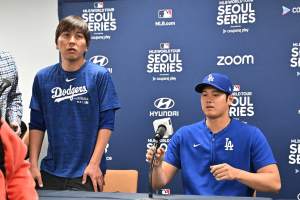
Ippei Mizuhara Accused of Stealing over $16M from Shohei Ohtani, Charged with Fraud
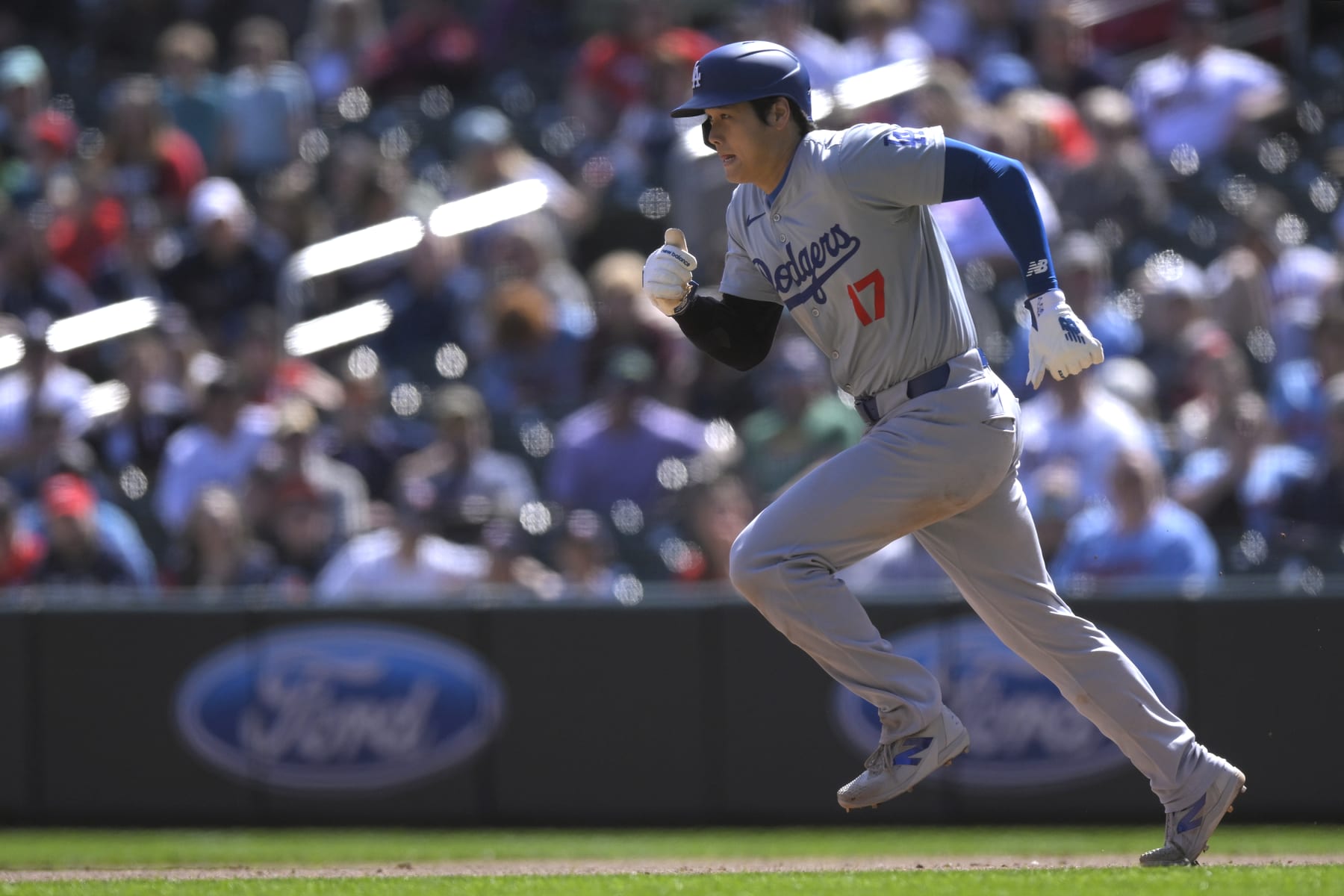
Report: Shohei Ohtani's Former Interpreter Negotiating Plea Deal amid Gambling Scheme
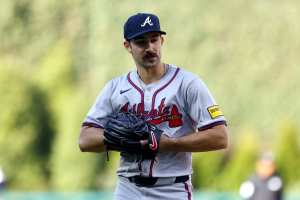
MLB Teams That Already Have Clear Needs for 2024 Trade Deadline
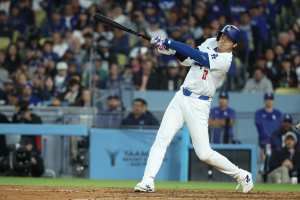
Dodgers Fan Who Caught Shohei Ohtani HR Says Team Pressured Her to Give Up Ball

MLB Power Rankings: Do Yankees or Dodgers Deserve the No. 1 Spot?
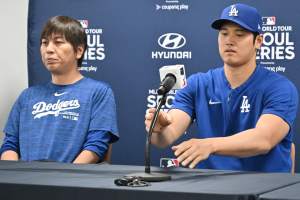
Ippei Mizuhara Released on $25K Bond; Allegedly Stole $16M from Shohei Ohtani
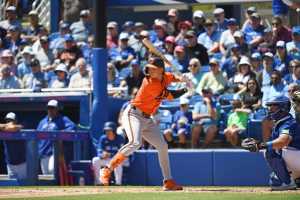
MLB Rumors: Jackson Holliday Called Up by Orioles; Baseball's No. 1 Overall Prospect
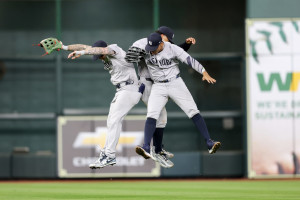
MLB Power Rankings: Where All 30 Teams Stand After 2024 Opening Weekend
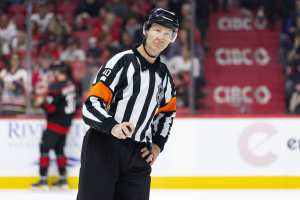
NHL Ref Steve Kozari Conscious and Alert; Left Penguins vs. Lightning on Stretcher

Report: Bad Bunny's Rimas Sports Agency Facing 'Significant' MLBPA Punishment





























